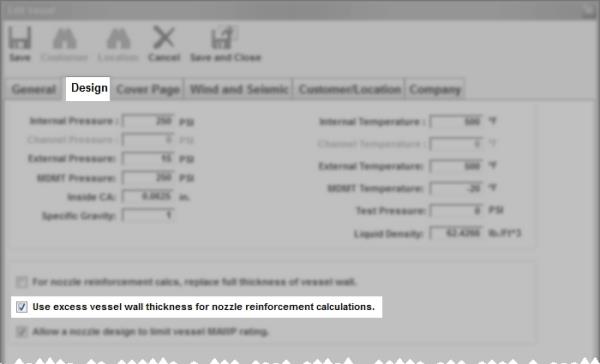Nozzle design includes checking several different calculations and failure modes. Weld detail requirements, weld strength, nozzle neck thickness, reinforcement, compact reinforcement, and large opening rigidity must all be analyzed. This article will address varying issues that may come up while designing a nozzle and will suggest solutions when applicable.
The value of E is incorrect in the nozzle thickness calculations
This value is equal to that entered in the "Efficiency" field on the Design Info tab and it drives the nozzle neck thickness calculations in UG-45(a). If you are looking at the calculation for trn, remember that UG-37(a) defines trn as for a seamless nozzle neck.
The value of E1 is incorrect in the nozzle thickness calculations
This value is set based on the "Nozzle Path" selection on the Design Info tab. If the nozzle host is ERW/Auto pipe, you must select that to make the calculation set E1=0.85. View the Nozzle - Design Info article for more information.
The Area of Reinforcement from the nozzle host is zero
The A1 value is being forced to zero by a setting in the vessel screen. If the “Use excess vessel wall thickness for nozzle reinforcement calculations” box is not selected, material from the host will not be used for reinforcement, resulting in A1=0. This box should be selected unless your internal requirements or those of a customer indicate that A1 should not be considered. To change this setting, select Vessel Information from the Vessel menu on the Components pane and go to the Design tab.
The pipe size picked for the tb3 determination is too big
Occasionally, DesignCalcs may appear to select a bigger pipe size than it should be when determining the thickness from Table UG-45. The code requires that the pipe size selected for determining the thickness be based on the outside diameter of the nozzle. If the nozzle diameter is bigger than the outside diameter listed for a specific NPS in ASME B36.10M, the next size pipe is chosen.
Related articles
